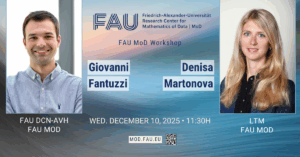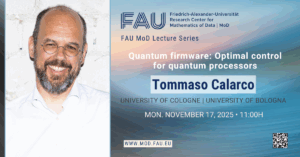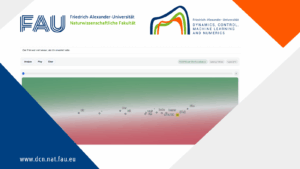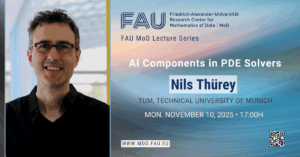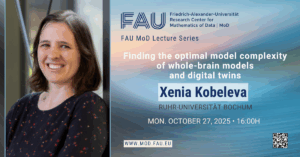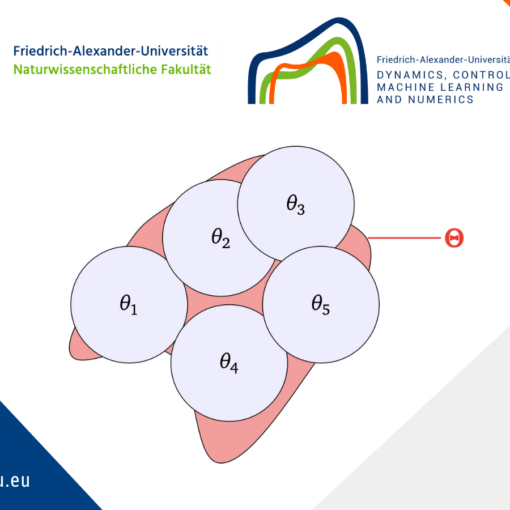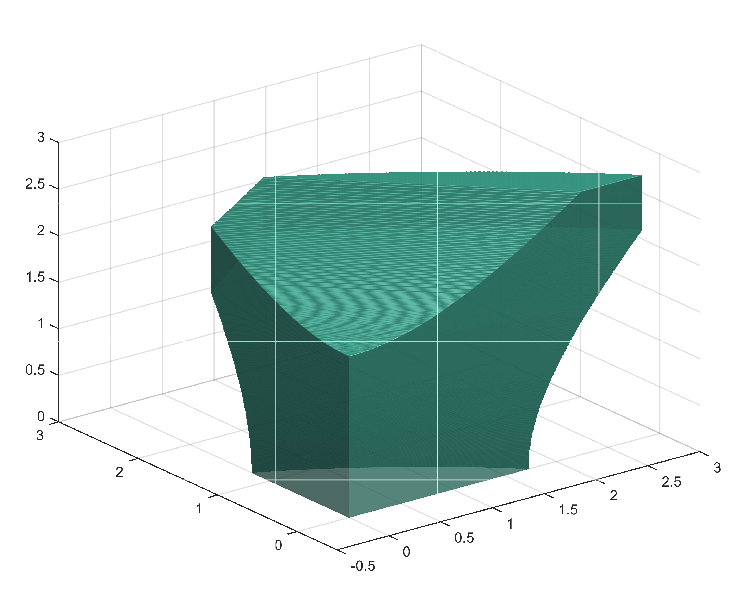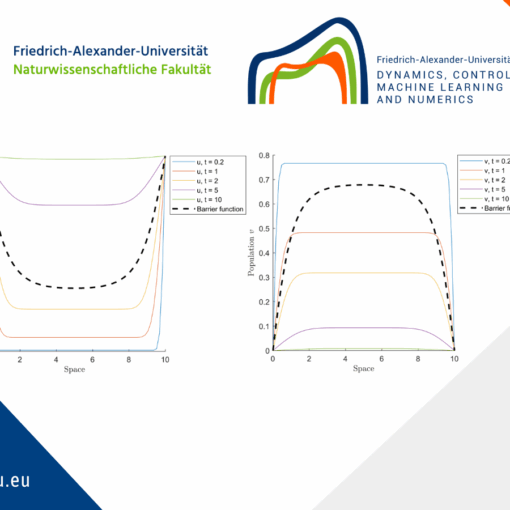Mathematics & Philosophy: On the philosophical foundations of mathematics and its role as a structural science
When we talk about mathematics today, many people think primarily of numbers, formulas, and calculations. Yet anyone who delves more deeply into the field soon discovers that mathematics is far more than a mere “tool” for solving technical or physical problems. It has a millennia-old tradition that not only stands in the context of the natural sciences but also arose in close dialogue with philosophical questions. The title of my post aims to shine a light on precisely this close connection: What are the philosophical roots of mathematics? Why is mathematics so effective in physics—and in the natural sciences in general? And what reasons indicate that this connection is more than mere coincidence?
This post was a thought experiment for possible lectures at “Die Lange Nacht der Wissenschaften” (The Long Night of Science) on October 25, 2025, in Erlangen. I have attempted to cast a somewhat wider net around the topic, given that, as of today, it remains a very open field in philosophy. To provide an easier introduction, some terms and concepts have been presented in a slightly simplified manner.
1 Ontology: What Is Mathematics?
First we deal with the question of what mathematics actually is (or could be). There are several logically closed approaches to answer this question.
Platonism
According to the platonist viewpoint, mathematical objects—such as numbers, sets, or geometric figures—exist in an abstract realm independent of the human mind. Among modern representatives of this position are Kurt Gödel (1906–1978) and physicist Roger Penrose (*1931). They argue that certain mathematical discoveries, like Gödel’s incompleteness theorems, point to an objective truth rather than a mere invention. Gödel states, for example:
Formalism
David Hilbert (1862–1943) viewed mathematics primarily as a formal system based on axioms and rules for symbol manipulation, where the question of an extra-linguistic reality for mathematical entities is left aside. In his lectures on the foundations of arithmetic and logic, Hilbert consistently emphasized that the foremost aim is to establish the consistency of the axiomatic framework. For instance, he remarks:
Such pronouncements illustrate Hilbert’s core conviction: proving consistency within a formal system is the key requirement for safeguarding the certainty of mathematical knowledge. By focusing on syntactic manipulations rather than ontological debates, he hoped to show that mathematics, as a game with symbols, can nonetheless yield rigorous and reliable results.
Constructivism / Intuitionism
Luitzen E. J. Brouwer (1881–1966) insisted that mathematical objects come into existence only through the constructive activity of the mathematician’s mind. A statement is considered true only if it can be proved in a step-by-step, constructive manner. The classical law of the excluded middle (tertium non datur) is rejected or limited unless one can provide a direct construction or a direct refutation. Brouwer wrote:
At this point, it is also worth mentioning the philosophical stance known as Nominalism. Due to its highly abstract nature, providing a full introduction would exceed the scope of the current discussion. In a nutshell, nominalism denies any substantive ontological status to mathematical entities, viewing them instead as mere names or symbols—nothing more than linguistic constructs with no independent existence. One of the most influential advocates of this view is the philosopher Hartry Field.
2 Epistemology: How Do We Know Mathematical Truth?
Mathematical statements are commonly regarded as necessary, absolutely certain, and independent of individual opinion. Yet how do we arrive at this certainty?
Axioms and Deduction
As early as ancient Greece, the Elements of Euclid popularized the axiomatic method, in which one proceeds from a small set of basic assumptions (axioms) and derives theorems via logical inference. Euclid famously begins by defining fundamental notions such as points and lines:
This procedure was further systematized in the modern era. For instance, Hilbert sought in the early 20th century to eliminate all uncertainty through a complete axiomatization of geometry and other areas of mathematics. In one well-known remark, he highlighted that the nature of the objects involved (points, lines, planes) is irrelevant to the underlying logical structure:
By emphasizing strict axiomatic frameworks, Hilbert hoped to achieve a fully rigorous, contradiction-free system. But is that actually possible?
Gödel’s Incompleteness Theorems (1931)
Kurt Gödel shook the belief that a formal system could be both entirely complete and consistent, rendering every truth within it provable. His first incompleteness theorem states, in simplified terms, that within any sufficiently expressive formal system, there exist true statements that cannot be proven within the system itself. Gödel writes:
“Sei x eine beliebige rekursive widerspruchsfreie Klasse von Formeln, dann gilt: Die Satzformel, welche besagt, dass x widerspruchsfrei ist, ist nicht x-beweisbar; insbesondere ist die Widerspruchsfreiheit von P in P unbeweisbar, vorausgesetzt, dass P widerspruchsfrei ist (im entgegengesetzten Fall ist natürlich jede Aussage beweisbar).”
[Gödel, K. Uber formal unentscheidbare Sätze der Principia Mathematica und verwandter Systeme I. Monatsh. f. Mathematik und Physik 38, 173–198 (1931), Satz XI]
This result was a philosophical milestone that continues to spark debate today: Are there mathematical truths that lie “beyond” our formal reach, yet still exist in some Platonic sense? This is exactly what Gödel himself also remarked: This result is not a contradiction to the Hilbert formalism
“Denn dieser^1 setzt nur die Existenz eines mit finiten Mitteln geführten Widerspruchsfreiheitsbeweises voraus und es wäre denkbar, dass es finite Beweise gibt, die sich in P nicht darstellen lassen.”
[Gödel, K. Uber formal unentscheidbare Sätze der Principia Mathematica und verwandter Systeme I. Monatsh. f. Mathematik und Physik 38, 173–198 (1931), p.197]
^1 Gödel referes to Hilbert’s formalism here
3 Mathematics as a Structural Science in Physics
In the 17th century, Galileo Galilei (1564–1642) asserted in Il Saggiatore that the “book of nature” is written in the language of mathematics. This idea was further developed by Isaac Newton (1642–1726/27) in his Principia Mathematica (1687), demonstrating that fundamental laws of nature—such as gravitation or the laws of motion—can be expressed in mathematical equations capable of making remarkably precise predictions.
A key feature of mathematics in physics is its power to provide a “grammar” or “syntax” for describing natural phenomena. Structures like C^∗-algebras, groups, Lie algebras, matrices, operators and tensors form part of an abstract toolkit that physicists use to model forces, fields, particle states, and symmetries. These constructs are not simply computational conveniences: they offer a conceptual framework that unifies diverse observations and enables us to probe the underlying laws of the universe.
3.1 Examples
• Classical Mechanics
Newton’s equations of motion, as well as the later Lagrangian and Hamiltonian formulations, all rely on mathematical concepts such as derivatives, integrals and the calculus of variations.
• Quantum Mechanics
The notion of Hilbert spaces, along with operators, eigenvalues, and eigenstates, arises from linear algebra and functional analysis and is crucial for understanding the behavior of particles at the microscopic scale.
• General Relativity
Developed by Albert Einstein, this theory uses the language of tensor calculus and Riemannian geometry—originally formulated by Bernhard Riemann in the 19th century—to describe the curvature of spacetime and gravitational phenomena.
These examples reveal how mathematics, far from being merely a computational aid, serves as an indispensable structural framework through which physics advances our grasp of nature’s most fundamental principles.
4 Wigner’s “Unreasonable Effectiveness of Mathematics”
One of the most influential essays on this subject was written by Eugene Wigner, a Nobel laureate in physics, who published “The Unreasonable Effectiveness of Mathematics in the Natural Sciences” in 1960. In this article, he expresses amazement at how mathematics—often developed for purely abstract reasons, such as complex analysis or group theory—can so readily and perfectly be applied in physics. Wigner famously remarks:
This “unreasonable effectiveness” raises philosophical questions: is it merely a coincidence, a historical artifact, or even evidence that nature itself must be “mathematically structured”? Why do theories that originate seemingly from “pure play” or an “inner aesthetic sense” later match real phenomena so precisely? Reflecting on this quandary, Wigner noted:
For Wigner, the startling success of mathematics in the physical sciences cannot be taken for granted, and it continues to challenge our understanding of why the abstract creations of the mathematician align so well with empirical reality.
5 Reasons for the Strong Symbiosis Between Mathematics and Physics
Amid all these examples, one might ask whether the success of mathematics in physics is merely a coincidence or whether there are deeper reasons for this “symbiotic” relationship. In what follows, we explore several perspectives that help illuminate why these two fields appear so inextricably linked.
Abstraction as Key
Physics seeks to discover general laws that hold in a wide range of circumstances. Mathematics, for its part, isolates essential structures and offers a universal language that, once established, can often be applied in varied contexts. Group theory provides a telling example: originally developed in the context of algebra by Évariste Galois (1811–1832), it found key applications in quantum mechanics to describe the symmetries of elementary particles.
Cognitive and Evolutionary Aspects
Human beings possess a natural capacity to recognize patterns. Numbers, geometry, and symmetries appear in many cultures, deeply rooted in our perception. It is plausible that we find mathematical patterns in nature because our minds actively look for them (or project them), thus shaping our conception of laws that may partly reflect the structure of our cognition. As Henri Poincaré (1854–1912) suggested:
Consequently, the tight fit between mathematics and physics might stem from our culturally and cognitively constructed language, which aligns neatly with our observations.
5.1 Philosophical Positions
So far we basically just motivated why mathematics and physics could indeed show a deep symbiosis. To actually at least partially answer the question(s), we need to dive into meta philosophical theories.
Realist (Platonist) Perspective
A realist standpoint close to Platonism holds that the world is mathematical, and that we merely discover pre-existing structures. The ancient view of Plato remains influential in modern forms of mathematical realism; Roger Penrose, for instance, suggests:
Idealist Perspective (e.g. Kant, German Idealism)
In contrast to straightforward Platonism, idealist views emphasize that space, time, and the fundamental forms of mathematical thought (arithmetic, geometry) may arise from our own mental framework. Immanuel Kant argued in the Critique of Pure Reason:
Mathematics, according to this perspective, does not directly reflect an external reality but expresses our epistemological preconditions. Later idealist thinkers like Fichte, Schelling, and Hegel further examined whether the world can be truly independent of the mind. Under such a view, the effectiveness of mathematics in the natural sciences partly arises from the fact that we always already organize our experiences with these cognitive structures, thus rendering them mathematically tractable.
Perspective
A pragmatic stance would maintain that we invent mathematical formulas and models precisely to yield useful descriptions of our observations.
Nature’s apparent amenability to mathematical treatment emerges from the way we design our experiments and adapt our theories, rather than from any inherent mathematical identity of the world. Physicist Albert Einstein famously wrote:
Approaches
Constructivist approaches shift the focus onto our cognitive constructions, arguing that validity in physics and mathematics is a product of consistent (human) methods. Only that which can be effectively constructed and demonstrated step by step is regarded as having true meaning or “existence.” Thus, the resonance between mathematics and physics rests on the rules and practices we adopt, rather than on mind-independent entities.
6 Conclusion
Mathematics is thus far more than a mere computational tool. It harbors a wealth of philosophical questions that directly affect our understanding of knowledge, truth, and reality. Why does it appear, as Wigner phrased it, “unreasonably effective” when we seek to describe nature? Is this evidence that we are uncovering fundamental principles of existence itself, or does it merely reflect our human perspective, which happens to be especially adept at recognizing certain structures while ignoring others?
Regardless of how we choose to answer these questions, one point remains clear: without mathematics, modern science would be inconceivable, and without philosophical reflection, we could scarcely comprehend what we are doing and why it works so well.
It is therefore worthwhile to pause for a moment and not merely marvel at some formulas, but also reflect on the ideas behind them.
7 Further references and literature (selection)
• Platon: Politeia, Timaios
(Ancient sources on the Theory of Forms and mathematics)
• Aristoteles: Metaphysics
(Presents a contrasting view to Plato’s theory of forms)
• Galilei: Il Saggiatore (1623)
(On the language of nature)
• Isaac Newton: Philosophiae Naturalis Principia Mathematica (1687)
(Foundational work of classical mechanics)
• David Hilbert: Grundlagen der Geometrie (1899)
(Marks the beginning of formalism)
• Kurt Gödel: Uber formal unentscheidbare Sätze der Principia Mathematica und verwandter Systeme (1931)
(Establishes the incompleteness theorems)
• Eugene Wigner: The Unreasonable Effectiveness of Mathematics in the Natural Sciences (1960)
(Published in Communications on Pure and Applied Mathematics; discusses the puzzling success of mathematics in physics)
• Roger Penrose: The Road to Reality (2004)
(A platonist perspective from a mathematician/physicist)
• Hartry Field: Truth and the Absence of Fact (2001)
(Examines questions of truth, nominalism, and the role of mathematics in scientific theories)
|| Go to the Math & Research main page
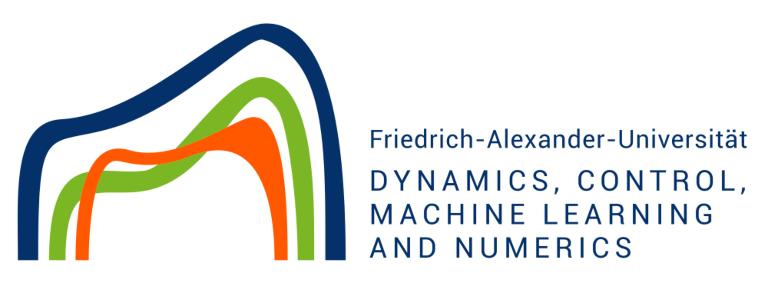
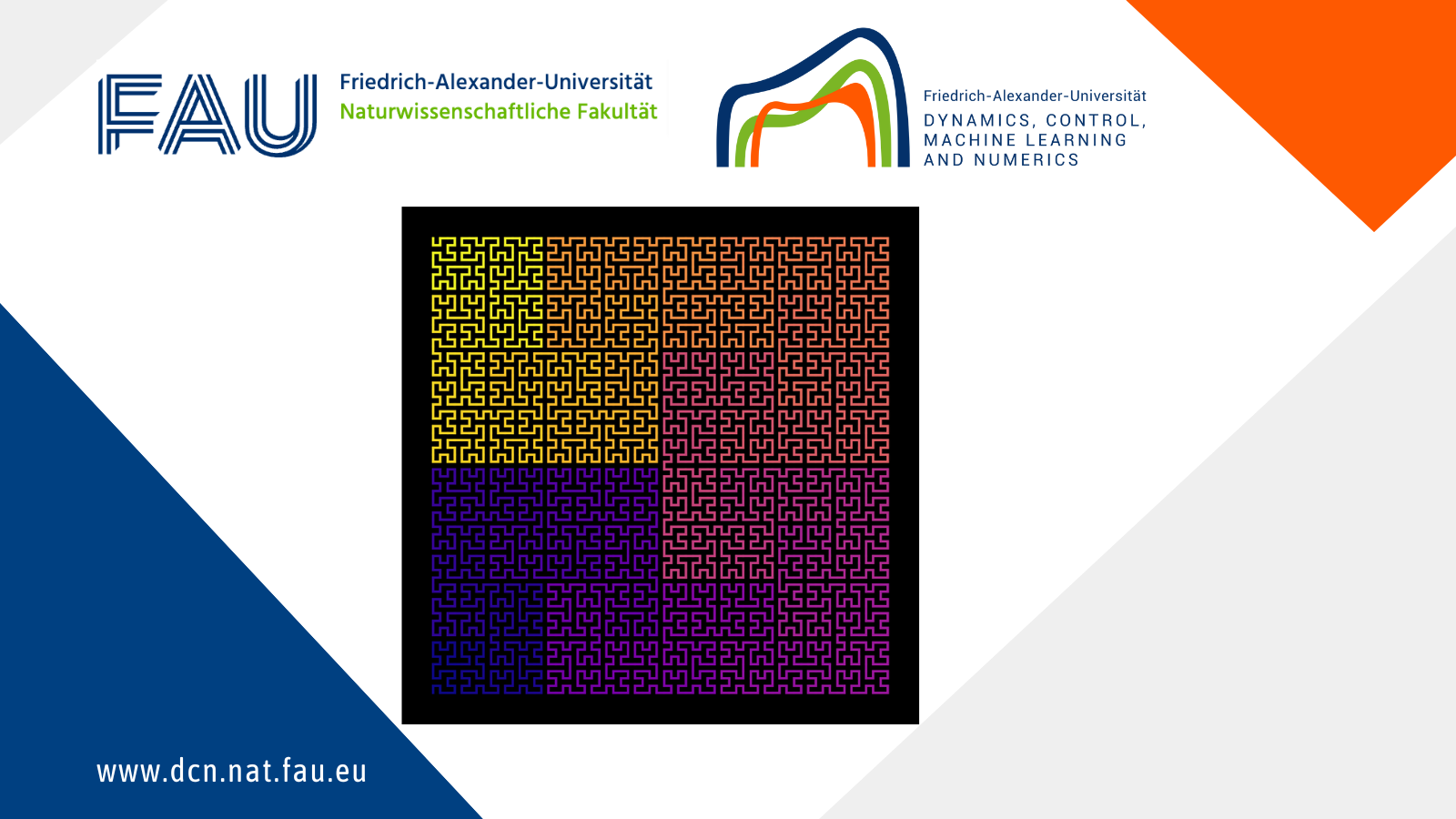
 Christopher Sorg
Christopher Sorg